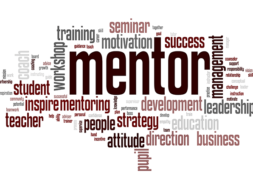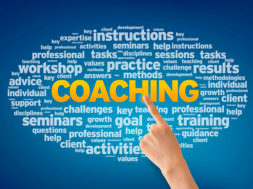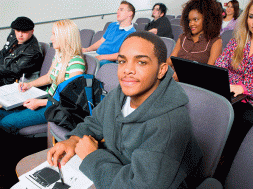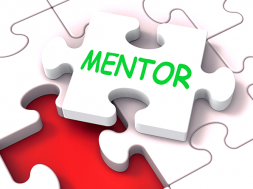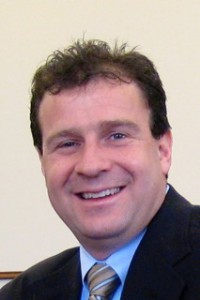
Latest Research in Cognitive Science, Impact on Retention and Completion
By Scott Fitzgibbon, Ed.D., The Pacific Institute Education Initiative
Many students need a chance. And many students need a second chance. Unfortunately, too many of those students squander those chances, not because they aren’t capable of achieving an education, but because they are trapped in the Habits, Attitudes, Beliefs, and Expectations (HABEs) and the self-fulfilling habit loops that have led to failure before. The results of the past keep negatively impacting their futures through recurring decisions to stop out, drop out, or “the bad luck” of just not being able to meet the requirements to keep progressing toward completion.
As Dr. Daniel Siegel explains, the brain is “an anticipation machine” structured to take experiences that happened in the past and use them to come up with expectations about what will happen in the future.
This means that “prior learning shapes present perceptions.”1
Too many of the students served within our sector of education are trapped in this downward spiral that has become all too typical. It is not a downward spiral due to inability, but rather of a self-fulfilling prophecy they have been re-living in their educational pursuits for a long time. Their ultimate success in education verses the inevitable cycle to repeat the same pattern that has plagued them in the past depends on a conscious and active process to change the way they think.
Our Habits, Attitudes, Beliefs, and Expectations have become automatic responses and reactions over our lifetime. These HABEs subconsciously guide our many daily routines, which includes the subconscious routines in thinking, behaving, and decision-making with regard to our approach toward education.
Our Habits are the behaviors or neural pathways that we have repeated to the point that they have been driven from the conscious to the subconscious and thus have become automatic. Those that have assimilated successful habits toward education which have led to successful educational outcomes in the past are not faced with the challenge to change habits, but fortuitously can ride the habits they already have.
For those that have not assimilated successful habits along the way, it is necessary to put new habits in place in order to change the outcome.
Unfortunately, all of our past experiences are stored in the neurons of our brain, not just the experience but also how we felt about those experiences, which have become Attitudes. With the accumulation of the many experiences coupled with emotions over our lifetime, they build to become our Beliefs, or our reality as we perceive it. All of these stored Habits, Attitudes and Beliefs have a significant influence on the outcome or Expectations we set.
The challenge for a growing percentage of career college students is that it has become a self-fulfilling prophecy of underachieving. What they don’t consciously realize is that their Beliefs have been established and reinforced through many repetitive negative experiences and the result is they become trapped in the same cycle of thinking and behaving.
“If you always do what you’ve always done, you’ll always get what you’ve always got.” – Henry Ford
According to Shirzad Chamine, the human brain is wired to perform two primary functions: survive and thrive. In survive mode, our survivor brain takes control, primarily looking for the negative threats to our physical and emotional survival. Shirzad calls the limbic region and the left brain, which focuses on language and serial functions i.e., things that are logical and rational, the survivor brain and the right side of our brain as the Sage.2 When we are in survive mode, we are narrowly focused in the limbic and left brain regions. The negative consequences include the release of the stress hormone cortisol and the narrowing of our attention so subsequently we focus on aspects that support the negative HABEs of our past. These negative HABEs lead us to the inevitable conclusions of our past experiences, “I just can’t seem to get it.”
So why does this happen? How does my brain conspire against me? Have you ever walked into a classroom and someone was sitting in your seat? Does it bother you? Your perception of your environment tells you, “hey, that person is in my seat” and even though that seat has not technically been assigned to you, you have been sitting there since the class began so in your mind, it’s my seat. So what happens? Because someone is sitting in my seat, the survivor brain takes over which narrows your focus and you become greatly distracted with something very trivial and subsequently lose sight of the intended goal, which is the information being taught in the class.
This mental hijacking, the obsession with a trivial and largely unimportant event has much more to do with the fact that my mind, feeling out of place because of the negative assimilated HABEs of my educational past, was seeking an out and therefore distracted me.
The result, not getting the information that was truly important, leads back to an all too familiar conclusion, I didn’t understand a word of instruction rather than consciously realizing that the reality is…I didn’t pay attention.
“We can not solve our problems with the same level of thinking that created them” – Albert Einstein
Norbert Weiner, the founding father of the computer, had a saying. He called it the GI/GO principle, garbage in, garbage out. If we put misinformation into a computer, we shouldn’t expect the right answers to come out. When considering the completion of a new skill set, graduation, a new career, or a new income, too many of our students get drawn back into their negative past experiences, garbage-in information that is inaccurate or untrue, and consequently, stuck under-living their educational potential.
According to Neurobiologist Dr. James McGaugh of the University of California at Irvine, “the purpose of memory is to predict the future.” In order to get on the other side of those negative, hurtful, painful past experiences that have led to the past decisions to stop out, or drop out, or become distracted and just not meet the requirements to progress toward completion, it is time to change the mindset in order to make decisions in the future based on what is possible, rather than what has happened in the past. In order to break the old self-fulfilling prophecy, it takes a conscious awareness and effort not to slip back into the old patterns of thinking and behaving. It takes a deliberate process of identifying and assimilating a clear goal and the effort to work new HABEs until they replace the old ones.
It is rarely, if ever, that our students do not succeed because of their aptitude or the inability to comprehend the work, but rather because of their self-discipline and unwillingness to complete the work. At the conscious level, it seems logical to “just do it” but the HABEs within our subconscious are powerful, gaining their strength from a lifetime of experiences riddled with emotions. The good news is that many of our HABEs have been very beneficial and we don’t need or want to change them, but the bad news is that for those outcomes we intend to change, it is necessary to rewrite those HABEs. Those students need our help to bring those HABEs to conscious awareness and out of hiding. By helping our students to become self-aware of the very HABEs that are blocking their academic potential, they can begin the process of rewriting.
Scott Fitzgibbon, Ed.D. is a co-author of Thought Patterns for a Successful Career, Mastering the Attitude of Success student curriculum with The Pacific Institute Education Initiative.
Resources
- Fogel, Steven Jay; Rosin, Mark (2014-03-06). Your Mind Is What Your Brain Does for a Living: Learn How to Make It Work for You (Kindle Locations 1440-1443). Greenleaf Book Group Press. Kindle Edition.
- Chamine, Shirzad (2012-04-02). Positive Intelligence: Why Only 20% of Teams and Individuals Achieve Their True Potential AND HOW YOU CAN ACHIEVE YOURS (Kindle Locations 1761-1763). Greenleaf Book Group Press. Kindle Edition.
Dr. Scott Fitzgibbon has been involved in higher education since 1991 with wide-ranging experience in academics, admissions, student services, and career services. Scott has worked extensively with school administrators and faculty specializing in cognitive-behavioral training directed toward affecting employee and student persistence and retention. He has taught thousands of employees and students to apply behavioral understanding to teaching, learning, teamwork, customer service, and sales.
Dr. Fitzgibbon is the co-author of The Pacific Institute’s Mastering the Attitude of Success™ and Reset™ curriculum. Working The Pacific Institute Higher Education Initiative, this student success curriculum has been implemented in over 500 career schools across North America reaching over 1,500,000 students and 35,000 school employees.
In addition to his work within education, Dr. Fitzgibbon has designed and implemented professional development training and evaluation initiatives for healthcare and service providers, social service and government agencies, and manufacturing. He has earned a Doctorate in Education Administration from the University of Pittsburgh (2002), a Master’s degree in Student Personnel Services and Counseling also from the University of Pittsburgh (1995), and a Bachelors degree in Business Finance from St. Vincent College (1991). In addition, he is a Pennsylvania Licensed Professional Counselor (2002).
Dr. Fitzgibbon has guest lectured for numerous international, national and state association conferences.
Contact Information: Dr. Scott Fitzgibbon // Partner // The Pacific Institute Education Initiative // 412-600-2505 // drsfitzgibbon@comcast.net // www.educationinitiative.thepacificinstitute.com // Facebook.com/drscottfitzgibbon


